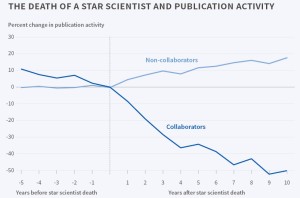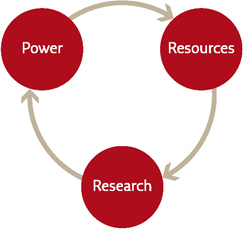Science Seen Physicist and Time One author Colin Gillespie helps you understand your world.
After 117 years this quadrillion-dollar idea is gathering speed. But this golden egg may hatch too slowly.
A recent estimate tells us the next deep new idea in physics could lead to a quadrillion-dollar economic boom. This gives us a huge self-interest in moving new physics along. How does new physics happen?
Specifically, what we are waiting for is Planck-scale physics. It deals with what goes on at a scale far smaller than atoms. It is named for Nobel Prize-winning German physicist Max Planck. In 1899 he deduced—and calculated—the size of this scale from the curious behavior of electrons in atoms. (That date says that already we’ve been waiting a long time!)
In 1962 American physicist and philosopher Thomas Kuhn wrote a controversial book, The Structure of Scientific Revolutions, about how new deep ideas in physics come along. Kuhn says deep progress entails a paradigm shift. His description of the generation and acceptance of “paradigm shifts” spawned much critical analysis.
 Max Planck himself has something to say about the reason for delay. In his 1946 autobiography he suggests a simpler notion now known as Planck’s Principle. A popular version of it is: ‘Science advances one funeral at a time.’ A less loose translation from Planck’s German might be: ‘A new scientific truth is not established in such a way that its opponents become convinced and declare themselves to be converted, but rather by the fact that its opponents gradually die out and that the next generation is made familiar with its truth from the beginning.’
Max Planck himself has something to say about the reason for delay. In his 1946 autobiography he suggests a simpler notion now known as Planck’s Principle. A popular version of it is: ‘Science advances one funeral at a time.’ A less loose translation from Planck’s German might be: ‘A new scientific truth is not established in such a way that its opponents become convinced and declare themselves to be converted, but rather by the fact that its opponents gradually die out and that the next generation is made familiar with its truth from the beginning.’
Recent evidence from the National Bureau of Economic Research gives us a window into the science machine. In a paper titled “Does Science Advance One Funeral at a Time?” three economists compare publication activity of scientists who worked in collaboration with 450 leading scientists who died ‘at the peak of their scientific abilities’ and compare with publications of non-collaborators in the same fields. After death of the leading scientist collaborators’ publication rates tended to decline while non-collaborators’ increased. But the key finding was that many non-collaborators became active in that field only after the death.
All of which seems to say: New physics needs new physicists. Kuhn does not exactly disagree; indeed he quotes Planck’s Principle in his book.
This is a more-than-purely-economic public issue. History teaches us to be wary of long slumps like the one we now seem to be enduring. In such slumps the politics of hope tends to give way to the politics of despair. That politics has led to worldwide cataclysms we would prefer not to repeat, yet we now seem close to the abyss.
Thus the great value of new fundamental physics is not just the shot it can give everybody’s pocketbook. It is the hope of progress that can help to restore sanity to a cranky world.
So Planck-scale physics offers us a timely choice. We can wait passively until its economic boost shows up, maybe decades from now. It will be good for our grandchildren perhaps; but what kind of world could they see by then? Or we can move it actively along and meantime focus on hope, anticipating its arrival.
 How can we move it along? Maybe divert a tiny fraction of the Large Hadron Collider’s unproductive funding into Planck-scale physics? It’s not clear that this would work but may be worth a try. It would cost even less to make materials—how about comic books?—for kids to get them thinking Planck-scale concepts without waiting for old physicists to die.
How can we move it along? Maybe divert a tiny fraction of the Large Hadron Collider’s unproductive funding into Planck-scale physics? It’s not clear that this would work but may be worth a try. It would cost even less to make materials—how about comic books?—for kids to get them thinking Planck-scale concepts without waiting for old physicists to die.
And focusing on hope? It is a simple message: Get ready for a quadrillion-dollar boost to the economy. It’s in everybody’s interests to see that it gets shared around.
Sources:
Pierre Azoulay, Christian Fons-Rosen & Joshua S. Graff Zivin (2015), “Does Science Advance One Funeral at a Time?”, NBER Working Paper No. 21788; http://www.nber.org/digest/mar16/w21788.html
Max Planck (1948), Wissenschaftliche Selbstbiographie, Leipzig: 1948; tr. Scientific Autobiography and Other Papers (1949), New York: Philosophical Library, http://www.goodreads.com/book/show/2310947.Scientific_Autobiography_and_Other_Papers
Image credits:
National Bureau of Economic Research, http://www.nber.org/digest/mar16/w21788.html
Erenow, http://erenow.com/common/sapiensbriefhistory/68.html

No comments yet.